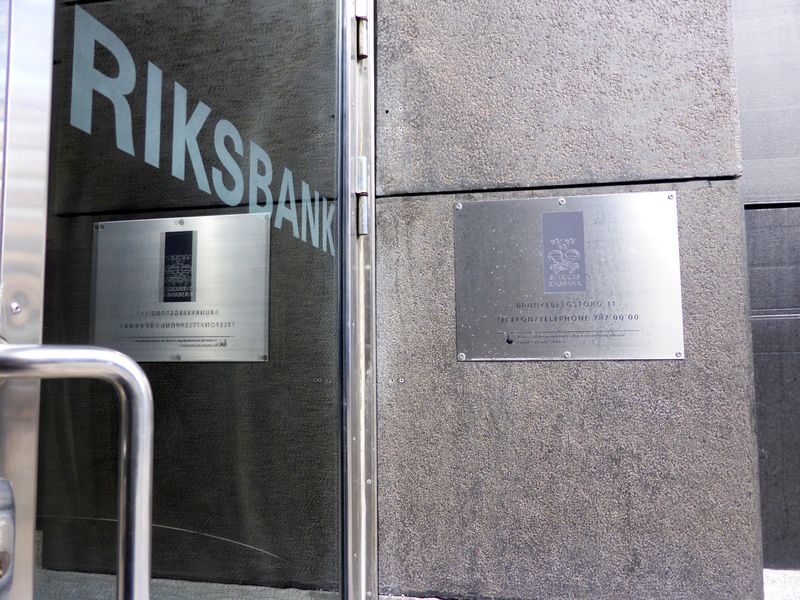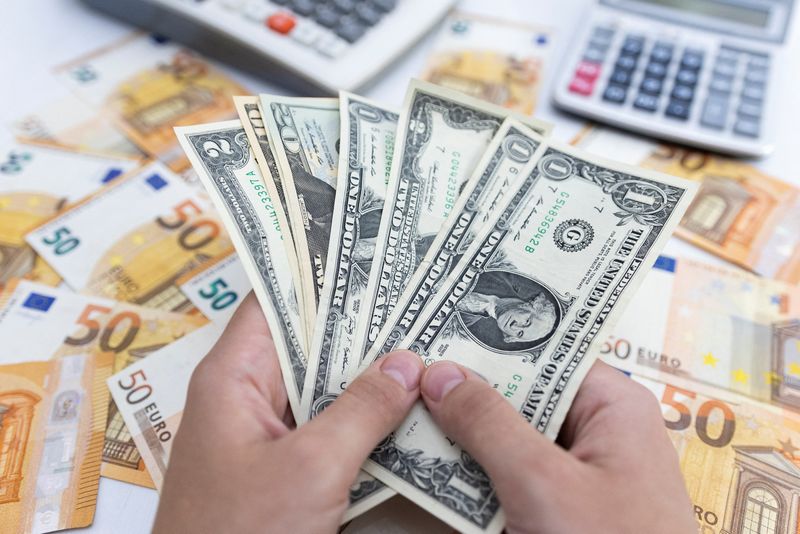(Updates prices, adds comment)
By Hannah Lang
WASHINGTON (Reuters) - The euro recovered on Thursday from a two-week low against the dollar, which sputtered after fresh inflation data showed U.S. consumer spending rose less than expected in May.
Consumer spending, which accounts for more than two-thirds of U.S. economic activity, gained 0.2% last month, the Commerce Department said on Thursday, falling short of the 0.4% economists had expected.
The dollar, which had been buoyed by safe-haven flows against the euro, last fell 0.305% to 104.720.
"The dollar rally remains largely intact, given rising worries about a global recession, but today, we saw the dollar gave back some ground after today's data did nothing to allay concerns about the U.S. economy lurching towards a recession over the coming year," said Joe Manimbo, senior market analyst, at Western Union (NYSE:WU) Business Solutions in Washington.
The euro was last up 0.33% at $1.0473, reversing a decline sparked by increasing recession jitters in the euro zone and the energy crisis stoked by the war in Ukraine.
The European Central Bank is expected to raise interest rates in July for the first time in a decade to try to cool accelerating inflation, although economists are divided on the magnitude of any hike.
Markets will now look to euro zone inflation figures due on Friday to get a better sense of how aggressive the ECB might be in hiking rates.
"If you do get a firm (consumer price index) print in tomorrow, there is a chance that the market might price in increased odds of a 50-basis point hike in the July meeting, and that could be enough for the euro to bounce somewhat," said Bipan Rai, North America head of FX strategy at CIBC Capital Markets.
Fresh euro zone data showed French inflation climbed to a record high of 6.5% in June, while Greece cut its growth forecast to 3.2% this year from 3.8%.
Euro zone unemployment fell to a new record low in May as the economy continued to rebound from the COVID-19 pandemic, even if inflation exacerbated by Russia's invasion of Ukraine is expected to dampen growth.
The dollar also traded just below a fresh 24-year peak of 137 Japanese yen touched on Wednesday. The gap between a hawkish Federal Reserve and a dovish Bank of Japan continues to weigh heavily on the Japanese currency, which was last trading at 135.59 yen per dollar .
The yen is down 15% against the dollar for the first six months of 2022, the worst first-half of year performance for the currency since 2013.
In cryptocurrencies, bitcoin dipped back below the $20,000 milestone level on persistent market ructions. It was also hurt by the U.S. Securities and Exchange Commission rejecting a proposal to list a spot bitcoin exchange-traded fund by digital asset manager Grayscale. Bitcoin last fell 6.28% to $18,922.55.
The cryptocurrency is down 58% in the first six months of 2022, its worst first-half of year showing ever.
========================================================
Currency bid prices at 3:15PM (1915 GMT)
Description RIC Last U.S. Close Pct Change YTD Pct High Bid Low Bid
Previous Change
Session
Dollar index 104.7300 105.0600 -0.31% 9.478% +105.5400 +104.6400
Euro/Dollar $1.0475 $1.0443 +0.31% -7.86% +$1.0490 +$1.0381
Dollar/Yen 135.5800 136.6000 -0.74% +17.78% +136.8000 +135.5600
Euro/Yen 142.02 142.61 -0.41% +8.98% +142.8600 +141.3800
Dollar/Swiss 0.9541 0.9548 -0.13% +4.54% +0.9605 +0.9531
Sterling/Dollar $1.2172 $1.2125 +0.48% -9.92% +$1.2188 +$1.2093
Dollar/Canadian 1.2882 1.2895 -0.10% +1.89% +1.2933 +1.2861
Aussie/Dollar $0.6896 $0.6880 +0.26% -5.10% +$0.6919 +$0.6854
Euro/Swiss 0.9994 0.9971 +0.23% -3.62% +1.0013 +0.9945
Euro/Sterling 0.8602 0.8614 -0.14% +2.40% +0.8620 +0.8551
NZ $0.6242 $0.6224 +0.30% -8.80% +$0.6254 +$0.6198
Dollar/Dollar
Dollar/Norway 9.8585 9.8900 -0.50% +11.70% +9.9625 +9.8320
Euro/Norway 10.3294 10.3216 +0.08% +3.16% +10.3736 +10.3091

Dollar/Sweden 10.2391 10.2261 +0.38% +13.54% +10.3452 +10.2001
Euro/Sweden 10.7256 10.6849 +0.38% +4.80% +10.7431 +10.6717
